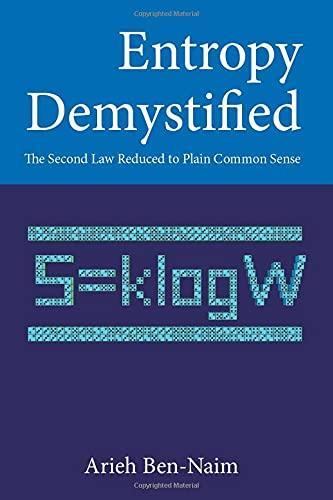Review of 'Entropy Demystified: The Second Law Reduced To Plain Common Sense' on 'Goodreads'
3 estrellas
The author explains entropy essentially with a dice-rolling experiment: Given N dice, e.g. all with the six on top, choose any dice (chance no. 1) and roll (chance no. 2). If the experiment is carried out often enough, the sum of the numbers on the dice approaches a value quite stably. It is very likely that the value 6N will not be reached again if N is sufficiently large.
It is clear from the experiment what is meant by (generally not directly measurable) specfic events (the numbers on the individual dice) and by (directly measurable) "dim" events (the sum of the numbers on the dice). I would have been interested to know whether the relationship between specific and measured events must always be linear.
The fact that 6N will most likely not be reached again is an illustration of the "arrow of time".
There are many more specific events that …
The author explains entropy essentially with a dice-rolling experiment: Given N dice, e.g. all with the six on top, choose any dice (chance no. 1) and roll (chance no. 2). If the experiment is carried out often enough, the sum of the numbers on the dice approaches a value quite stably. It is very likely that the value 6N will not be reached again if N is sufficiently large.
It is clear from the experiment what is meant by (generally not directly measurable) specfic events (the numbers on the individual dice) and by (directly measurable) "dim" events (the sum of the numbers on the dice). I would have been interested to know whether the relationship between specific and measured events must always be linear.
The fact that 6N will most likely not be reached again is an illustration of the "arrow of time".
There are many more specific events that lead to a sum 3N or 4N than to 6N. This seems to me to be the main point of the book.
The author equates "entropy" with search cost, i.e. as a measure of missing information. I would have liked to see a proof of equivalence to the usual definition of entropy (sum of p log p over all p).
These are definitely important insights for me. I'm not sure if I needed to read this at this length to understand it. Why does this need to be discussed for 2, 4, 10, 100 and 10000 dices? And then again imagine that it's not numbers of dice but colours, smells, tastes or sounds?
I don't find the book entertainingly written. The examples from physics (Bose-Einstein configurations, Fermi-Dirac configurations) did not help me as a non-physicist. While reading, I had the idea that one could write a book "Entropy Mystified", where the many applications of this ingenious concept are presented.

